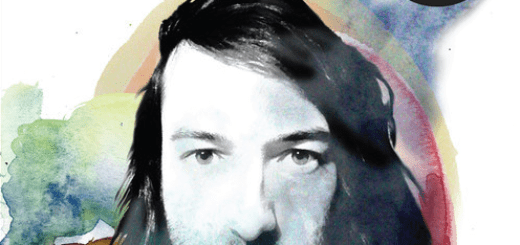Fuzz: Fuzz Review
You don’t have to be Greil Marcus to recognize that Ty Segall is a Black Sabbath fan. While he hasn’t been afraid to show his influences (and talk about his love for the band), his latest project Fuzz is his most Immoni/Ozzy indebted work yet. The eight song thunderbolt of a record screams 1969, from the album cover to righteous guitar riffs, and is one of the most instantly gratifying records I have heard in a while. It takes great artists to play music so obviously influenced by a band/genre and still come out the other end with something that sounds fresh and at least moderately unique, but the three longhairs in Fuzz do that in spades.
Stepping out from behind the guitar and sitting down behind a drum kit, Segall takes a more democratic approach to his new three piece band with Charles Moothart and Roland Cosio, sharing writing duties with Moothart. Segall sings on most of the tracks, but it is Moothart’s sumptuous guitar work that is the highlight of the record. It isn’t a big change to hear Segall’s primal wail behind fuzz-laden guitar, but Moothart’s guitar work hits like a ton of bricks. Where Segall is a master of making something simple sound raucous, Moothart is more in the business of taking stoned-out riffs and building a massive wall of sound. After a ominous intro with “Earthen Gate,” the guitars chug forward with reckless abandon throughout most of the record and seem tailor made for blasting out a car window on a steamy summer night. At points the band venture into the garage-punk area the Segall does so well, but mostly this is a metal/classic-rock LP that bows at the alter of bands who used their namesake as a way to shake loose the foundations of rock and roll 40 years ago. Segall and Cosio hold down the back end (there are even drum and bass solos!), while Moothart is let loose to play the hell out of his guitar, both with his proto-metal riffs and his wailing solos. It is a record that is best taken as a sum of its parts, from the textured, multi-dimensional “Hazemaze” to the earth-shattering “Preacher,” but album standout is the earworm melody of “What’s in My Head.” The track ventures away from the brute force pyschedlica that consumes most of Fuzz to create the warmest melody of the record, and is a song that stands toe to toe with the best material Segall has created.
Fuzz is a side-project, but their well worn feel comes from the fact that this isn’t the first time at the rodeo for these three. Ty’s vocals are built to scream over the monster riffs that Moothart unwinds on this record. Moothart isn’t new to this game either, as his guitar work was an instrumental part of Segall’s outstanding (and gigantic sounding) Slaughterhouse LP. Side project or not, this is a record that both pays tribute to the greats in the past and moves this music forward. While his prodigious talent and mind-numbing volume of material are the things that get Ty Segall the most attention, Fuzz brings me back to the thought that his greatest talent is getting himself and other amazing in the same room and just letting the tape roll. Whether it is White Fence or Mikal Cronin or Fuzz, Segall seems to create gold out of whatever he touches, and brings out the best in the musicians around him. This iteration just happens to love Black Sabbath.
Catch Fuzz at the Turf Club Sunday night with CCR Headcleaner and Gay Witch Abortion, and don’t forget your earplugs.
[soundcloud url=”https://api.soundcloud.com/tracks/112009380″ width=”100%” height=”166″ iframe=”true” /]
Writer / co-founder




















